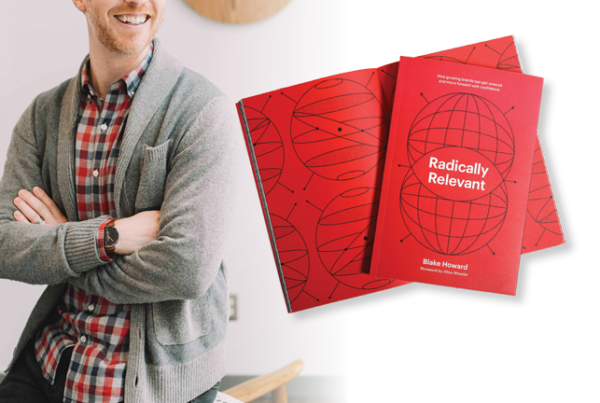“T
hat has been the response to using TikTok as a marketing tool in more than one meeting room over the last several years. Meanwhile, the app has exploded into a multigenerational platform that is home to diverse content, content creators, and, yes, many opportunistic brands.
You can make all the “dancing teenagers” jokes you want, but TikTok’s Global Head of Business Marketing Sofia Hernandez just wants to make sure you don’t call it a social media platform. When asked how the company has changed social media, she is quick to correct the notion.
“TikTok isn’t a social media platform—we’re an entertainment platform,” Hernandez says. “You ‘check’ other platforms, but you ‘watch’ TikTok. People come to TikTok to be entertained, and our community of more than one billion global monthly active users is uniquely engaged compared to other platforms. The TikTok community is ushering in a new era where authenticity is at the forefront.”
If you are not one of the one billion, TikTok is an app—er, platform—that makes it easy to create, post, and share short-form videos ranging in duration from 15 seconds to now 10 minutes (as of March 2022). Users often create dancing (yes, it’s true), comedy, singing, and even lip-syncing clips and upload them to the app. The more people like your content, the more followers you get.
Five short years ago, TikTok had fewer users than Pinterest and Twitch—just over 100 million. In 2021, for the third consecutive year, TikTok was the most downloaded app globally, with 545 million downloads. Now, with its one billion users in 2022, TikTok is nearly on par with Instagram.
In fact, according to digital marketing and media research company eMarketer, TikTok is now more popular with American Gen Zers (27 million) than Instagram (33 million). As you might have inferred by now, all these stats have made TikTok a sweet spot for marketers trying to reach those coveted younger audiences, and the platform is not just for the kids anymore. eMarketer also reported that in the first quarter of 2021, 36 percent of TikTok users were aged 35–54, a 10 percent jump in that age bracket from the year before. This is why brands such as Nike, Pepsi, Calvin Klein, and many others have created paid and influencer campaigns on TikTok. It doesn’t hurt that 92 percent of users globally have taken an action after watching a TikTok, according to research done by Kantar in 2021.
“It’s been an exciting few years for TikTok,” Hernandez says. “We’ve seen the platform grow from being dominated by Gen Z to exploding into a multigenerational platform that is as diverse in its content as it is in the creators and businesses that we see show up on the platform every day.”
Hernandez points to a diverse, authentic, and multigenerational audience—from chefs to astronomers to beekeepers—that makes TikTok a place where all demographics belong and are represented. Besides being home to so many people and such highly desired demographics, what is TikTok’s value to marketers? Hernandez says the platform is a “full-funnel marketing strategy.” That means anything from brand affinity to mobile purchases. Some brands use TikTok to boost sales, while others are focused on connecting with their community. Most of all, TikTok’s marketing power is in the authenticity of its users—both those doing the marketing and those being marketed to.
“The most successful business owners (on TikTok) are real, and they have fun with it,” Hernandez says. “Often, business owners take us inside their community, workshop, and daily lives, and in turn, they connect with new audiences down the street and around the globe.”
To help companies understand how they can use TikTok to benefit their business, the company created TikTok For Business in June 2020, a sort of online starter pack. It’s designed to provide marketers with the tools to be creative storytellers so they can engage with the TikTok community. It offers sections on creating TikTok campaigns and managing TikTok ads, along with a hub of creative resources and success stories.
One of the selling points of TikTok as a marketing tool is that the high-performing content on the platform doesn’t require much polishing or filtering. In fact, rawness is rewarded. For small and medium-sized businesses, that means getting real in an effort to build long-lasting connections with their community. The creative tools of the platform are designed to make it easy to hit the mark. Hernandez points to Bruce Graybill, Owner/Woodcrafter of Sider’s Woodcrafting in Brewer, Maine, as one example. Graybill used TikTok to share some of the work he had done making handmade cutting boards and chopping blocks. He started his TikTok account several years ago and then struck TikTok gold when one video went viral, garnering more than three million views. His followers quickly shot from 7,000 to more than 80,000. Today, Graybill attributes 90 percent of his sales to TikTok, where he emphasizes the value of having fun with his team and connecting with his community.
”"But it's just teenagers dancing!"
Finding marketing success on TikTok is all about getting eyeballs on your content. Some ways to do that: create videos that respond to the questions and comments of your community; create captions for your videos to be sure the audience is following what you post (even if they have the sound off); keep your videos raw and authentic, like Bruce, the now-famous woodcrafter from Maine; and be responsive in order to take advantage of TikTok trends happening in real time, like using a viral voice-over track or video clip users are personalizing.
Finally, to use TikTok’s algorithm to your advantage, it’s important to understand that users are shown content based on what they have liked, rather than just whom they follow. That’s called the For You feed, which serves up content based on the user’s interactions, video information, and device account settings.
“This means that users are naturally and authentically discovering, engaging, and creating things that are interesting to them,” Hernandez explains. “For brands, this opens an entirely new window of opportunity to create content that speaks to people, to invite the community to join in the conversation, and to make TikToks.”
Hernandez says that another drawing card of TikTok is that anyone can be discovered. She emphasizes that TikTok creators are “just like you and me,” which means anyone on the platform has a chance to reach an audience without needing to be a celebrity or established creator. These creators know the community intimately, and Hernandez calls them the backbone of the platform because they produce relatable content that establishes trust with an audience.
If your business is not overflowing with creative types who can deliver the TikTok goods, or if you’ve just opened a company TikTok account, partnering up with an influencer or creator might be a good way to establish your brand on the platform. Most TikTok influencers were early adapters to the platform and have gained huge followings in certain subject areas—food, fitness, beauty, finance—based on their creative content. In addition, creative influencers are also working with brands to help them promote their products on TikTok. In some cases, creative influencers are now even teaming up to create collab or content houses, de facto ad agencies that market to TikTok audiences.
There are numerous examples of brands finding TikTok marketing success by cocreating, handing the keys to creators, or jumping on the back of existing trends. In NBC’s #Sing2gether hashtag challenge, for example, Universal Pictures encouraged the community to show off their singing skills for the chance to be flown out to Los Angeles for the Sing 2 premiere and win a record deal with Republic Records. Hernandez says more than 1.6 million videos were submitted for the challenge, including the winning rendition of “Girl on Fire,” sung by creator Julia Minichiello. Another example was Delta’s Women’s History Month TikTok campaign. The airline used Lady Gaga and Beyoncé’s song “Telephone” to highlight women who host on, build, and fly planes in honor of Women’s History Month. The video of crew members participating in the “Telephone” trend garnered more than 11.6 million views and 2.7 million likes.
As with most new marketing mediums, a potential foray into the world of TikTok can bring with it a fear of the unknown for brand leaders. Some see it as entertaining and fun, but also risky and slightly out of control as it relates to managing their brand reputation. Hernandez encourages brand leaders who are prisoners to traditional metrics such as ROI, engagement, and consumer reactions to look past the risk and reward of TikTok and simply “lean in.”
“A great example of a brand turning risk into reward is the shaving cream brand eos,” Hernandez says. “In February of 2021 TikTok creator Carly Joy went viral for sharing an authentic and honest review of eos’s shave cream, using language many would deem ‘risky.’”
The video went viral, causing eos to see 25 times their typical order growth and 450 times growth in website visits for the shave cream. At Target, eos became the number one shave brand across men and women the week of Carly’s TikTok. It held that position for several weeks until it completely sold out at Target. In response, eos launched a limited-edition product with a very risqué name as a nod to Carly’s colorful verbiage in her original review. The campaign was just recently named a winner of Ad Age’s Creativity Awards, under the category of Best ROI: Work That Works.
Now that you know a little bit about the TikTok landscape, the next step is to dive in and start using the platform, reading the comments, leaning on creators, and engaging with your community. The best way to establish that authentic connection with your brand’s audience is to create content that feels native and natural to the TikTok community.
“We always encourage brands to think like marketers, but act like creators,” Hernandez says. “Test and try new things on our platform. You’ll get the hang of it in no time.”

Tip-Top TikTok Brands
Looking for brands to follow for examples of how to do it right? Here are a few that are ahead of the curve.
- Chipotle – Chipotle has become one of the most followed food brands on the platform and relies on its Gen Z team members to resonate with the TikTok crowd. The restaurant chain creates branded hashtag challenges, is quick to join TikTok trends, and has used celebrity influencers. They also build TikTok campaigns around “events” such as National Avocado Day.
- The NBA – The NBA got on board with TikTok early and they keep things light. They also have a wealth of video content from years of basketball coverage to pull from. Many of the league’s TikTok videos come from NBA games, but they also sprinkle in raw, behind-the-scenes content such as players in the tunnel after games.
- The San Diego Zoo – Everyone seems to love the San Diego Zoo’s TikTok account. The recipe is straightforward: use animals; combine with music; get people to say, “Aww!”; repeat. The zoo loads up on the cuteness factor and also leans on staff such as animal care specialists to speak on camera.
- Ed Sheeran – Okay, he’s a musician, not a brand, but Ed Sheeran has more than 11 million followers on TikTok. He uses the platform to connect with fans with backstage clips and funny videos from the road and to promote and share videos of fans covering his music. He even performed live for 5.5 million viewers in the TikTok UEFA EURO 2020 Show, which celebrated soccer and music.

Beyond Print Magazine
Request your complimentary Beyond Print Magazine, mailed quarterly.








